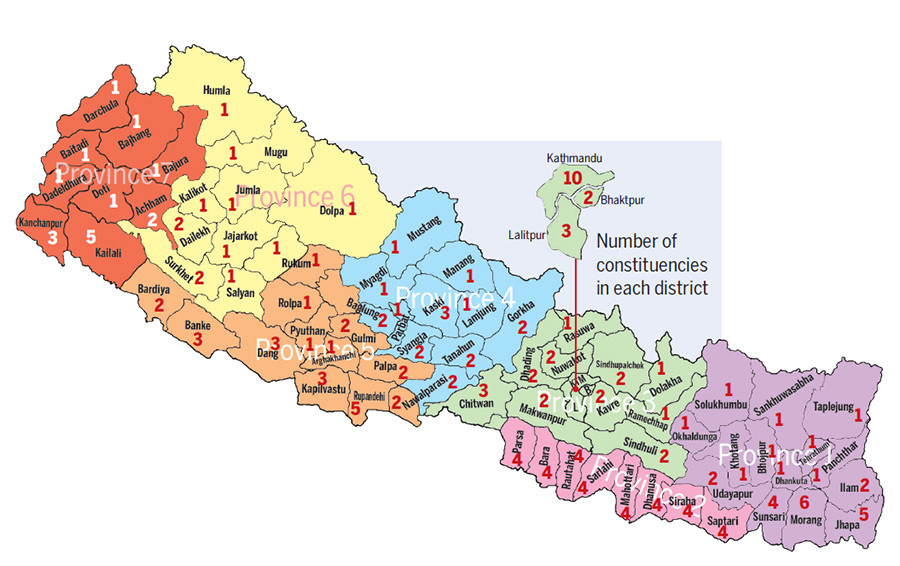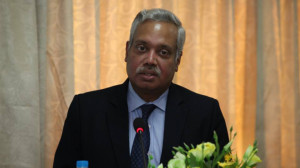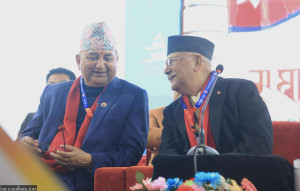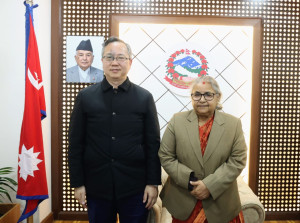National
CDC submits its report with 165 electoral constituencies
The Constituency Delimitation Commission (CDC) on Wednesday submitted its report in line with its mandate to carve out 165 constituencies across the country for the election of House of Representatives.
Sanjeev Giri
The Constituency Delimitation Commission (CDC) on Wednesday submitted its report in line with its mandate to carve out 165 constituencies across the country for the election of House of Representatives. The number of constituencies for provincial elections will be 330, as the constitutional provision requires two constituencies for each federal constituency.
The two elections will be held in two phases on November 26 and December 7 as per Wednesday’s Cabinet decision.
A copy of the report, which was submitted to Prime Minister Sher Bahadur Deuba at Baluwatar on Wednesday, will also be submitted to the Election Commission, which had long been demanding electoral constituencies to expedite poll preparations.
The process of carving out electoral constituencies, according to the CDC, will be completed after the report is published on the Nepal Gazette.
According to CDC Chairman Kamal Narayan Das, 90 percent weightage has been given to population and 10 percent to geography while carving out the constituencies “after thoroughly considering factors like geography, population distribution, social diversity and laws regarding electoral constituency”.
The CDC has also made sure that one district has at least one constituency.
Kathmandu will have the highest number of constituencies with 10, followed by Morang (6), and Jhapa, Rupandehi and Kailali (five constituencies each).
Nine districts will have four constituencies each and five districts will have three constituencies each. Seven districts will have three constituencies each while 21 districts will have two constituencies each. Likewise, 35 are single constituency districts. It must be noted that Rukum district has been split with Rukum (east) in Province 5 and Rukum (west) in Province 6. Both will have one constituency each. Similarly, Nawalparasi (east) and Nawalparasi (west) will have two constituencies each. All eight districts of Province 2, where the final phase of local elections are scheduled for September 18, have four constituencies each.
Province 3 will have the highest number of constituencies with 33, followed by Province 2 (32 constituencies), Province 1 (28) constituencies), Province 5 (26 constituencies), Province 4 (18 constituencies), Province 7 (16 constituencies) and Province 6 (12 constituencies).

Of the total 165 electoral constituencies, 78 are in 20 Tarai districts which make up 47.27 percent of the country’s total geography.
The Madhes-based parties had been demanding 51 percent electoral constituencies in Tarai districts, saying that half of the country’s population resides in the region. The new CDC report has given one percentage point less constituencies compared to the number of constituencies the region had when there were 240 electoral constituencies.
“We have carved out the electoral constituencies and prepared the report after holding serious deliberations. Contentious issues were debated before we agreed upon them,” said Das. One of the CDC members, Bishwo Kalyan Parajuli, is learnt to have taken exception to the report saying the commission members “were influenced by the ruling coalition”.
But Das, who led the commission, said five copies of the report and map were “signed by all the CDC members” on Tuesday night.
“Some issues do crop up while working in a team. We, however, sorted out all the issue through healthy discussion before finalising the report,” added Das.
The submission of the CDC report takes the country one step ahead towards holding the provincial and federal polls by the constitutional deadline of January 21. The EC now needs election laws to expedite preparations. Home Minister Janardan Sharma described the carving out of new constituencies as a “big achievement”. “Election laws will also be in place soon,” said Sharma.
The CDC was formed on July 20 after much delay and initially given 21 days to complete its task. Its term was extended by 15 days on August 16. As per the constitution, the new constituencies carved out by the CDC cannot be altered for another 20 years and the CDC recommendations cannot be challenged in any court of law.
- Kathmandu will have highest number of constituencies (10)
- There will 35 single-constituency districts
- Province 3 will have maximum number of constituencies (33)
- Province 6 will have the least number of constituencies (12)
- 20 districts of the Tarai region will have 78 constituencies
- All eight districts of Province 2 will have four constituencies each




 10.12°C Kathmandu
10.12°C Kathmandu















